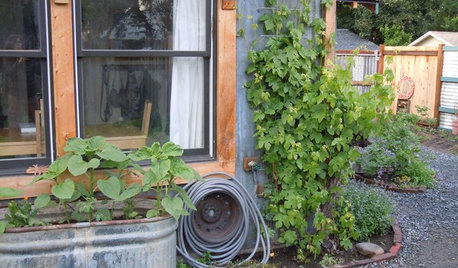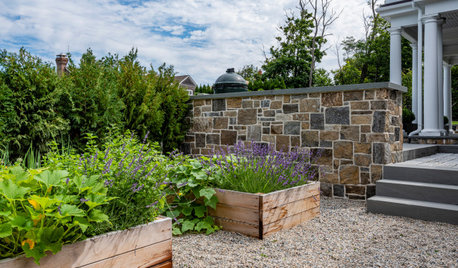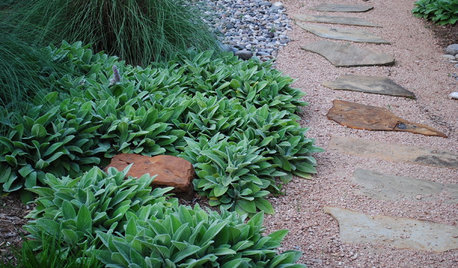Below are some pictures of a water system using floats with self watering containers.
I learned a lot in this forum, maybe this will be of use to others.
Also, I'd really like to get feedback from others who have set up automatic watering systems with self watering containers.
What has been your experience? results? lessons?,.....This is my first year trying it, although I've been growing in containers hand watering for a few years.
At first I used the same "high quality" potting mix that I used last year in a hand watered system with some compost mixed into some of the pots. The ones with extra compost became waterlogged and the plants died. The pots that had just the mix in them became dry at top and waterlogged at the bottom. The beans didnt mind this situation, but I had to rewet the eggplant and peppers and resume top watering.
For tomatoes IÂve gone to using a 1/3 peat, 1/3 vermiculite, 1/3 compost for the tomatoes. Hopefully this will work with the automatic watering.
Next I plan to test out AlÂs mix (3 parts pine bark, 2 parts Turface, 1 part sphagnum peat) with organic fertilizer.
In particular I want to get a system that is organic, can stay automatically watered all season long without water logging.
Much of the self watering with floats concept has already been discussed, but here are some comments:
 A large trash bucket feeds a separate 5 gallon bucket that has a float set to ~2". The bucket then feeds to the homemade Earthboxes. These EBs are all on the same level as the bucket with a float.
 I put a float directly in one EB since it sits at another level. Someone mentioned roots might clog this, so this might not have been a good idea, but IÂll find out later in the season.
 To get a simple waterproof connection between the buckets and the ¼" drip line, I first drilled a hole using a 3/16" drill bit, then using a big spike nail and twisted it into the hole. This made the hole bigger on the outside and slightly bigger on the inside of the bucket. Then cutting a sharp angle in the drip line, squeezed it through. If you do this, I suggest practicing first on a bucket or piece of plastic you donÂt need. ItÂs simple, but you canÂt let the hole get too big.
 I ordered the float valves from http://www.usplastic.com/catalog/product.asp?catalog_name=USPlastic&category_name=6109&product_id=12596&cookie%5Ftest=1
 Use the ¼" inlet float valve. If you use, be sure to disassemble it carefully and keep the 2 small pieces of plastic in the inlet. Notice how they are arranged when unscrewing, so you know how to put it back together after you insert the ¼" drip line.
 At first, in 2 of the EBs, I drilled holes into them for the ¼" drip line used to water them. Added a small shutoff valve, so I could turn off and let the soil dry out if necessary (which it will be with the potting mix I bought).
 Better then drilling holes in the EBs though is to just rely on siphon action and put the drip line in the aeration holes. This way you can easily move the EBs around without having to cut the drip line connection first. I used 2 right angle connectors in order to get the drip line into the EB in such a way so that the end stays low. You need to make sure water is flowing through the drip line before sticking it into the EB.
 When I go on vacation, I plan to use a Hudson water valve to make sure the water 50gallon can is kept full.
It seems that in order to keep from having to water regularly, I end up spending probably 10x the amount of time trying to set up an automatic watering system than if I just did hand watering, but it is more interesting.
Regards to all,
EM
P.S. To learn to post pictures for me required the guidance from by 11 year old son, and using photobucket.com
{{gwi:34274}}
{{gwi:34275}}
{{gwi:34276}}
{{gwi:34277}}
{{gwi:34278}}
{{gwi:34279}}
{{gwi:34280}}
{{gwi:34281}}
{{gwi:34282}}
{{gwi:34283}}
{{gwi:34284}}
{{gwi:34285}}














legacy
schwankmoe
Related Discussions
Which is better? Containers/grow bags/self-watering containers!
Q
container vs. self-watering container mix
Q
dirt/water in self-watering container SMELLS
Q
Container in container [Self-watering syatem]
Q
jethrojames
bruce825
michaelbrehm
emgardenerOriginal Author
smokincan
jadeforrest
nicksteel
nicksteel
nicksteel
nicksteel
nicksteel
nicksteel
nicksteel
emgardenerOriginal Author
rorionstar